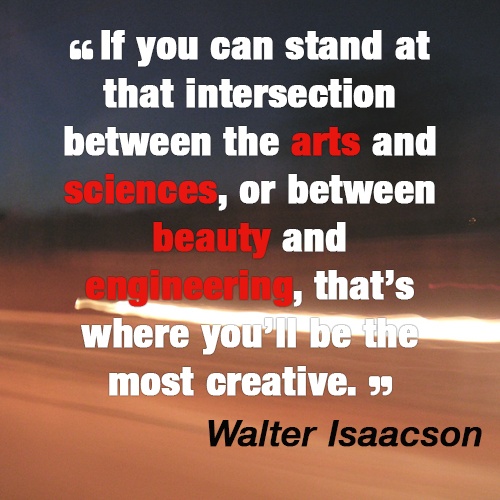Pick a sport, any sport. Now make a mental list of how it pertains to both art and science. Just like your players, one of your lists will most likely be longer than the other.
Some of you will think more about the mechanics involved with performing the tasks needed to play the sport well. You will think of the body as a machine that has to be adjusted, maintained and improved. You will think about muscles needed for a vertical leap, a curving free kick, a 90-mile-per-hour fastball, or a three-pointer. Maybe you’ll ponder ways to improve the vision required to kill a penalty or complete a pass over the middle. And some will think about the metrics used to measure progress, rehabilitation of injuries and overall performance.
Others will imagine the grace of pure athleticism — the beauty of an end-to-end rush in a hockey game, or the Ticky-Tacky ball movement of Barcelona or Spain’s soccer teams. You will marvel at the dazzling individual skill needed to make a one-handed catch in the end zone, or dribbling a ball or puck through five defenders.
Which of your lists are longer? Are you more science-based or art-based? Both, of course, are important. But getting the balance right is the challenge, isn’t it?
There’s a guy named Walter Isaacson, who for the past 10 years, has been writing books about creativity – what is it and how do we achieve it. He has written books about Steve Jobs, Albert Einstein, and a mathematician named Ada Lovelace, who is thought to have written instructions for the first computer program in the mid-1800s. His new book is about Leonard da Vinci, who not only painted the Mona Lisa and The Last Supper, but also sketched designs for a helicopter and a bicycle in the early 1500s.
In an article and a podcast on Recode, Isaacson talks about the balance between art and science. “If you can stand at that intersection between the arts and sciences, or between beauty and engineering, that’s where you’ll be the most creative,” he says.
Today, Isaacson says, we work on “Silo things.” We tell our talented kids to drill down into engineering and math, and discourage them from thinking on a broader, more creative level.
Do we do that in athletics? Do we discourage the creative players from understanding body mechanics and fitness strategies? Do we help the methodical players understand the bigger picture? If we don’t, are we doing our jobs?
So, the question now is how do we foster creativity in the analytical, logical type – the ones who know angles and patterns, but struggle to push those limits? And conversely, how do we encourage the imaginative players to play within the same system everyone else is using?
There are thousands of approaches, of course, and some have been proven successful. To find the good and the bad ways, we can look at the NBA. Every team has devastating one-on-one players. But only a select few of those teams are successful. How do Golden State, San Antonio and Cleveland do it?
An answer lies in finding “the intersection between the arts and sciences, between beauty and engineering,” Isaacson mentioned.
 Those patterns and angles those analytical players love change, and when they do, can they adapt to make the situation work or improve? On the other hand, the players who don’t see, or ignore, the system and patterns to go it alone. They can be shown simple alternatives to freelancing that will benefit everyone.
Those patterns and angles those analytical players love change, and when they do, can they adapt to make the situation work or improve? On the other hand, the players who don’t see, or ignore, the system and patterns to go it alone. They can be shown simple alternatives to freelancing that will benefit everyone.
Then there’s someone like Christian Pulisic, the once-in-a-generation 19-year-old American soccer star, who seems to have figured out how to be inventive and systematic at the same time. According to his mother, Pulisic loved to color as a child. As soon as he colored outside the lines, though, he needed to start over, which would indicate that he thought he failed. His mother finally bought White-Out to save buying new coloring books.
Every page of the coloring book had a pattern. In Pulisic’s mind, he could be as artistic as he wanted inside those lines but once he went outside the lines, he had to try again. That can tell us a lot about how creative players could or should treat their limits and structure. The limits of the object on the page was more important to Pulisic than artistry he displayed.
Two quotes from Einstein can help get your players to think differently about their contributions to the team. Tell the artistic ones “Strive not to be a success, but rather to be of value.” And tell the scientific ones, “Logic will get you from A to B. Imagination will take you everywhere.”
If it doesn’t work, at least you will sound smart.